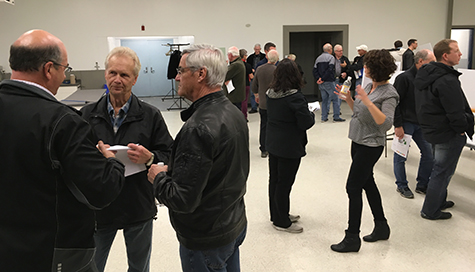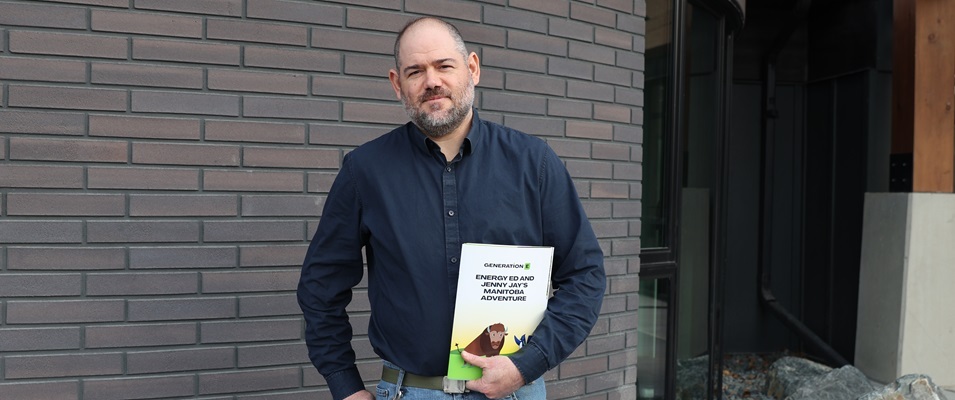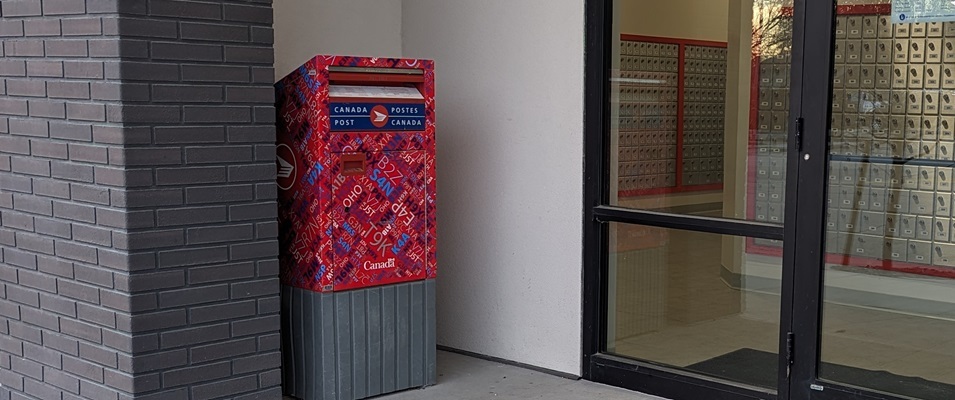
For years, Niverville’s town council has faced two persistent accusations: first, that they’re uncommunicative, regularly leaving locals in the dark. Second, that this failure to communicate is a sign not simply of negligence, but of council’s scorn for transparency. But are these accusations fair?
In response, council held an open house on October 27 at the south end of the arena. The goals were clear. On one hand, it would demonstrate that council had registered the complaints and were ready to remedy them. On the other, it would allow council to underline the ways in which it has been communicating up to now and dispel the non-transparency myth once and for all.
The open house was announced in a town-wide bulletin mailed to each household. Emails were sent, tweets tweeted, notices posted all over the web.
Every major issue—from water treatment and access, to overcrowding in schools, to multiplex plans, to policing—was represented. Each had a designated presentation station with literature provided and a stack of feedback materials for attendees to fill out and submit. “Literature” here does not mean dull, three-panel pamphlets. This was a multimedia affair, including three-foot-high presentation boards in full colour, a photo album of town beautification projects, and a video compilation on local greenspace maintenance.
Another strong merit was human representation. All five council members were on hand to answer questions and receive feedback in person. This, along with the obvious time and work that had been put into the event, made it all the more frustrating that the one key thing missing from Niverville Talks 3.0 was, well, Niverville. Of approximately 5,000 residents, 50 to 60 residents attended.
Mayor Myron Dyck freely admits that outward communication from council has been inadequate in the past, and says this very likely contributed to the disconnect both sides now face.
“People from Niverville understand the importance of investing in community. This is an active, internally engaged town,” he said, the words echoing with sad irony in the largely empty room. “Most of what we’re fighting here is a prejudice, perceived notions about what politicians are; we’re trying to break that stigma.”
Dyck suggested that one key, lingering problem on council is a lack of savvy as to how to cut through today’s web chatter.
Councillor Chris Wiebe, who has sat on council for two years, echoed these sentiments. He explains that while it may seem counterintuitive, the issue lies not in a dearth of information, but in a surplus.
“In this day and age, with so many [platforms], people become immune to communications,” says Wiebe. “When you want to know something, you go find it. But you filter your search, and it’s easy to filter out very important information by accident—and when that happens, people get upset. So, for us, it’s an issue of how we can consistently get the information into people’s hands.”
Nathan Dueck, council’s newest member, says that disorganized information output, combined with a suspicious public, is doing real damage to local public relations.
“Everybody is a partial expert in something, but sometimes a little bit of information can be a dangerous thing,” says Dueck. “It results in fraught conversations in backyards or around water-coolers where somebody knows something, they read something somewhere, but nobody really knows the whole story, and these chats breed misconception, fear, and reactivity. Rumour is a huge problem. Social media, for instance, is great for venting, but bad for productive discussion, bad for fact-checking and accountability.”
Mayor Dyck says councillors used to have specific portfolios—including, for instance, communications—but that business is now handled in common between all members. However, he suggested this may need review.
“We are actively entertaining the idea of expanding,” Dyck says. “We want council to effectively represent the community we serve and that may well mean adding new councillors to include a broader range of skillsets.”




















